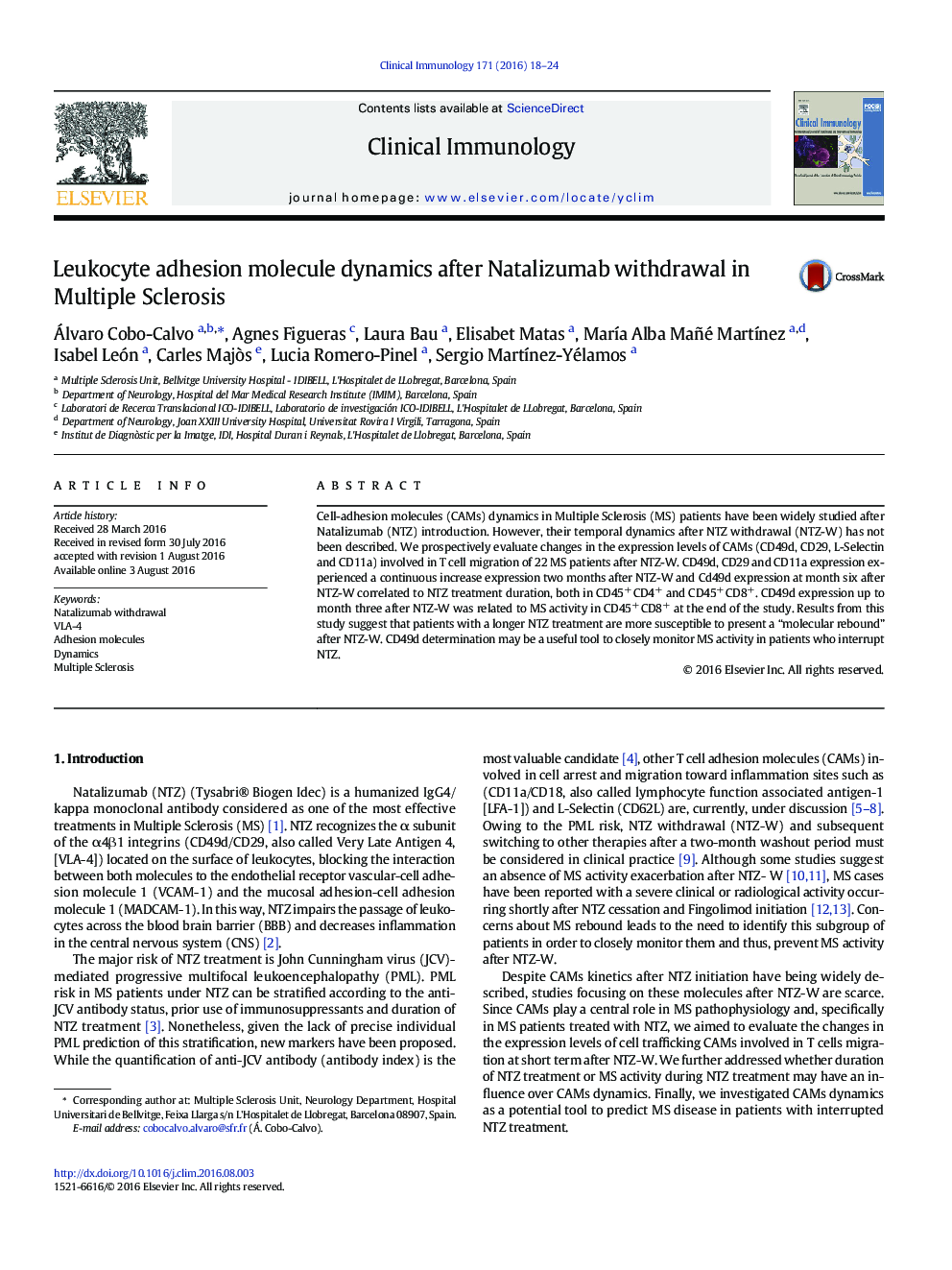| Article ID | Journal | Published Year | Pages | File Type |
|---|---|---|---|---|
| 6086958 | Clinical Immunology | 2016 | 7 Pages |
â¢VLA-4 subunits and CD11a expression increase continuously after Natalizumab withdrawal (NTZ-W) in MS patientsâ¢Duration of NTZ- treatment in MS patients may be related to a “molecular rebound” after NTZ-Wâ¢CD49d expression may be a useful tool to closely monitor MS activity in patients with interrupted NTZ
Cell-adhesion molecules (CAMs) dynamics in Multiple Sclerosis (MS) patients have been widely studied after Natalizumab (NTZ) introduction. However, their temporal dynamics after NTZ withdrawal (NTZ-W) has not been described. We prospectively evaluate changes in the expression levels of CAMs (CD49d, CD29, L-Selectin and CD11a) involved in T cell migration of 22 MS patients after NTZ-W. CD49d, CD29 and CD11a expression experienced a continuous increase expression two months after NTZ-W and Cd49d expression at month six after NTZ-W correlated to NTZ treatment duration, both in CD45+Â CD4+ and CD45+Â CD8+. CD49d expression up to month three after NTZ-W was related to MS activity in CD45+Â CD8+ at the end of the study. Results from this study suggest that patients with a longer NTZ treatment are more susceptible to present a “molecular rebound” after NTZ-W. CD49d determination may be a useful tool to closely monitor MS activity in patients who interrupt NTZ.
